TECH REVIEW – We took a look at Lenovo’s latest handheld games console, the Legion Go. It’s the latest entry into the growing handheld PC gaming market, following the Steam Deck and Asus ROG Ally. In our test we looked closely at the, gaming experience, display, performance, battery life and last but not least the design.
The Lenovo Legion Go handheld gaming console is an exciting new addition to the market, which aims to win over users with its unique features and performance. Its 8.8-inch, 144Hz IPS display delivers stunning visuals that bring out the detail and colours of games. The large size and high refresh rate add to the gaming experience, although the display is not OLED technology, which can put it at a disadvantage in terms of contrast and colour vibrancy compared to some of its competitors – specifically the older Nintendo Switch OLED and the newer Steam Deck OLED.
Good performance – but at a cost!
In terms of performance, the Legion Go comes with an AMD Ryzen Z1 Extreme processor, 16GB of RAM and 512GB or 1TB of storage to ensure smooth gameplay. We also tried out several games, including The Last of Us Part 1, which is problematic on other platforms, Starfield on Xbox Game Pass, Doom Eternal, Immortals of Aveum, Cyberpunk 2077 and Baldur’s Gate 3. These all ran with impressive graphics on Legion Go, although there was a noticeable drop in frame rate with the high resolution and graphics settings. (More on these in detail below.) However, by lowering the resolution and optimising the settings, performance improved significantly, which may be particularly appealing to PC gamers.
I should also add that the framerate also improved dramatically when I plugged the USB-C battery charger into the handheld, or when I took out my Baseus 65-watt Powerbank charger while on the bus on the way somewhere and charged it continuously while playing Lenovo Legion Go. In this case, even with the settings maxed out, I was able to get Legion Go to perform extremely well, while the QLED screen shone with beautiful picture quality, for example in Baldur’s Gate 3 and Cyberpunk 2077. So it’s highly recommended that if you’re thinking of buying a Legion Go, you get one of these powerful powerbanks so that even when you’re on the move, the experience is not compromised and of course, the battery life is extended considerably.
The real superhero: the FSR!
At the same time, another graphical option made a big difference to the gaming experience and the critical frame-rate/resolution/image quality trinity. The QHD resolution display puts it a step above another similar handheld, the ROG Ally, but is it worth maxing out the Legion Go? To see what it’s capable of, in addition to a handful of benchmarked games, I’ve included some additional tests running a handful of other games – including three of the most popular PC role-playing games of 2023 – to get a better idea of what the Legion is capable of.
Of course, I had to install Cyberpunk 2077 with its latest expansion, Phantom Liberty. First, I cranked Legion Go’s power mode all the way up, using all 30W of power, left the frame rate unlocked, and set the resolution to 1600p max. The first test used Cyberpunk 2077’s high presets with ray tracing turned on, and as expected, it averaged a pitiful 13fps through the frame rate recorder. Keeping the same resolution, we tried the Steam Deck preset, which uses a mix of low, medium and high settings. Frame rates improved, averaging around 24fps. It’s not really playable, but I was impressed that the game ran at all. Interestingly, using the Low preset also resulted in an average of around 23fps. (It should be added, however, that these are all values without using the Power/Powerbank, as I mentioned: using these improved the framerate a lot.)
Here comes FSR to the rescue. Using the Steam Deck preset, with FSR 2.1 Ultra Performance enabled, Go averaged 32fps. This is actually playable, and the visual quality is maintained. All in all, it’s not bad to play the game this way, but I know many people would prefer a higher frame rate – so we continued testing.
With the resolution reduced to 1280 x 800 using the Steam Deck preset and FSR 2.1 set to Ultra Performance, we measured 66 fps. The downside? A blurrier overall image, which was especially noticeable in Cyberpunk’s UI, which seemed smeared with Vaseline. Perhaps more playable, but much uglier. In the middle ground, 1200p improved the image significantly, but only averaged 48fps. Overall, full resolution is an option, but if you don’t mind some fps drops, the 1200p option gives decent frame rates and visuals. Overall, Cyberpunk 2077 runs pretty well on Go all things considered.
Our next game is of course Baldur’s Gate 3, the biggest RPG of the year. For testing this time I set the refresh rate to 60 Hz, but kept all the performance boosts as before. In the first test I ran the game at low settings at full resolution and the results were not very convincing. The ugly textures, especially harsh when looking at our characters up close, made it not worth it at full resolution. Frame rates also lagged above and below the 30fps range. As expected, lowering the resolution drastically improved frame rates: 1200p brought frame rates up into the 40s range, and we managed to maintain 60fps when we lowered the resolution to 1200×800.
But this was before the FSR was switched on. Baldur’s Gate 3 supports FSR 2.2, which significantly improves image quality and results in a significant increase in frame rate. With FSR enabled and 1600p resolution, frame rates jumped to the 40fps-50fps range. Of course the 1280 x 800 resolution reached 60fps, but still looked a bit ugly. So as a compromise, I found the 1200p setting to be just right, looks good and performs well.
Since the Starfield Steam deck is of extremely poor quality, I had to try it out on Legion Go. All in all, the game didn’t look bad, although you can certainly tell when the dynamic resolution kicks in. Although the frame rate bounced around from above to below 30fps, the game was functional and playable in all modes (it’s only 30fps on Xbox Series X, after all). Also, playing the game in Neon City with maxed out settings, Starfield is quite simply beautiful on the Lenovo Legion Go’s QLED display. When playing it like this, however, the use of a power connector or the aforementioned Baseus Powebank is a must to keep the framerate from dropping below 30 fps.
Anyway, it’s also important to note that switching between the three RPGs took a toll on the Go’s battery, reducing it from 100% to 7% in just an hour and a half, so it’s worth keeping the charger nearby. Of course, Lenovo actually recommends keeping the settings at 1200p and 60Hz, with the Thermal and OS Power modes running at their power, but mixing and matching settings can reportedly squeeze out up to three or more hours, depending on how intense the game is.
I ran the last two add-on tests in Rocket League and Horizon Zero Dawn: Complete Edition. First, I wanted to run Rocket League at 144fps, hoping to take advantage of Go’s 144Hz refresh rate. But even after I set the resolution to 1280 x 800, set the rendering quality to High Performance, turned off all special settings, and set Texture Detail, World Detail, and Particle Detail to Performance, Go only reached 144fps when I was in the game’s menus. Disappointing results, but chances are, if you’re not the type to worry about frame rates, you’re probably not too worried about hitting the 144Hz limit.
Finally, I topped off my further testing with Horizon: Zero Dawn, and I was completely impressed. The game remains gorgeous even on the Go’s smaller screen, and I didn’t have to sacrifice much visual clarity for decent performance. At a resolution of 1200p, with Performance preset in the settings and FSR 1.0 enabled, I was able to maintain a stable 60fps while having some VRAM overhead. However, once full resolution was reached, frame rate dropped back into the 40s, but if 60fps isn’t that important and you’d rather have a maximised view, you won’t be disappointed with the Go’s performance.
These Windows are a pain to open
Legion Go’s software interface, Windows 11, offers versatility, allowing you to run a wide range of applications and programs. The Legion Space launcher should help you access games quickly and manage settings easily. However, the user interface is not always intuitive or easy to understand and use, and Windows 11 is not always friendly with controller-based navigation, which can sometimes be challenging and even tiring after a while.
To manage the games on the Legion Go, Lenovo has created Legion Space, a tool that combines different game launchers and manages the device’s settings. Similar to Asus Armoury Crate, but more complicated, cumbersome and opaque in almost every way. For starters, Legion Space opens every time you turn on the system. You can minimize the window by pressing the Legion Space button on the left controller, but you can only close the program from the tray. This is invasive, and what’s worse is that you can’t just stop it from opening automatically in the Windows preferences, you have to go into the MSCONFIG tool and manually stop the program from opening on startup.
Apart from this oddity, the application is quite simply ugly. The thumbnails in the directory that fill in the addresses are often pixelated, and the shortcuts only lead to third-party websites. Clicking on the ‘Cloud Game’ button only takes you to the Xbox home page, hitting Game Store takes you to Gamesplanet.com, and Android Game only invites you to download from the Amazon App Store.
Fidgeting aside, the Legion Space has quite a few settings you can tailor to your own taste, including RGB around the control sticks and console key assignment – this includes device performance and battery status. Pressing the settings button on the right-hand controller also brings up a quick-setup window that looks like a shortened version of Legion Space, allowing you to quickly launch games, swap refresh rates and resolutions between three presets (1280 x 800, 1920 x 1200 and 2560 x 1600), as well as switch between four thermal modes and two OS power modes.
The downside is that the Legion Space interface is quite simply buggy. Sometimes the hotkeys don’t work, or the included frame rate monitor doesn’t detect the game I’m playing. Other times I change the resolution or refresh rate and lose control of the game for a moment. These little glitches add up over time and hamper the overall user experience.
Except for Legion Space, Legion Go runs full Windows 11 and works like any other computer. That means you can download apps, browse websites, listen to music, and write in Microsoft Word – whatever you do on your PC or laptop, you can do it here. The only difference is that you’ll have to contend with fiddly touchscreen controls and virtual keyboards that are still as inconsistent as they were on Ally. Despite the sharper screen and larger build, navigating Legion Go can be extremely frustrating at times.
FPS mode, as you haven’t experienced it yet? For better or worse…
One of the most interesting features and extras of the device is the detachable controllers. These controllers provide a comfortable grip and have extra buttons that offer additional functionality, such as using the right controller as a mouse in FPS mode. However, this did not always prove effective in tests and sometimes felt strange to use, and finding the various in-game functions and button assignments can be cumbersome.
Since the PC EA app version of the “wizard FPS” Immortals of Aveum (which we got from the game’s distributor, ALSO Ltd.) on Steam Deck for some reason failed to work, I thought (since it recently got FSR 3 support) I’d try it in unmounted mode. Thanks to FSR 3, the game runs and looks beautiful on the QLED screen, and even with the battery constantly charged, everything is still running at full capacity. However, the button layout in the FPS mode was awfully clunky within the game even after half an hour of struggling to find all the functions or put them in the right place.
On the other hand, when I put the controller on the included controller tray to use it as a “fake mouse”, the gaming experience (movement, control and aiming) left a lot to be desired anyway. According to Lenovo, the optical eye at the bottom of the controller provides greater precision and control. In practice, I felt less in control as the movements felt too sensitive and this controller slide was more clumsy than intuitive, despite looking “cool” from the outside. But once I’m sitting in front of a desk, it makes much more sense and is infinitely more intuitive to simply plug a USB mouse into the Go.
All in all, as awesome as Legion Go’s “FPS mode” sounds, it’s just a “gimmick”.
Keep giving him “food”, because he will soon pass out…
When it comes to battery life, the Legion Go doesn’t perform as well as some of its competitors – especially the recently released and thoroughly upgraded Steam Deck OLED. In our tests, the device only lasted around 1 hour 50 minutes of battery life under heavy use, which is significantly below competitors like the aforementioned Steam Deck OLED (or even the original LCD version) or the Asus ROG Ally. This could be a particularly important factor for those who want to play games for longer periods without having to constantly charge the device. Of course, as I have already mentioned and I cannot stress enough, it is best to play from a charger at home, and if you are on the move, the Powerbank mentioned above will make life extremely easy.
The Legion Go’s temperature increased significantly during testing, although the hand doesn’t come into direct contact with the warming parts, so this isn’t usually a problem. However, during extended periods of play, the warming may be noticeable, which can affect comfort.
A bit of a “heavy” experience, but still a good feeling to grip
Finally, I must say a few words about the design. The dimensions of the Lenovo Legion Go are approximately 13.11 cm x 29.72 cm x 4.06 cm (height x width x depth), and it weighs around 816 grams. This makes it considerably heavier than the three machines mentioned earlier. In fact, the Go is larger in every way, from the back to the controller, but still fits comfortably in the hand, especially larger hands. However, it lacks the slight curve on the edges of the machine that makes the Steam Deck and Ally easier to grip.
Most of the machine’s ports are on the top of the device, including a headphone jack, microSD card reader and a USB4 port. This USB-C connection supports 40 Gbps data transfer, Power Delivery 3.0 and DisplayPort 1.4 for connecting an external display. There’s also a USB4 port at the bottom. It has two built-in 2W (2W) speakers, and uses 802.11ax Wi-Fi and Bluetooth 5.1.
Lenovo sells two different Legion Go models, but they differ only in the size of the SSD. Internally, you’ll find 16 GB of LPDDR5X RAM, either 512 GB or 1 TB of storage, and the AMD Ryzen Z1 Extreme processor. Based on AMD’s Zen 4 architecture and 4nm process, the AMD Ryzen Z1 Extreme uses RDNA3 graphics, the company’s latest GPU architecture.
Asus has made great strides in the proper cooling design of the system, using “anti-gravity heat pipes” that cool the ROG Ally from different angles, keeping the system quiet and cool with a thermal design power (TDP) of up to 25W, thanks to top, rear and front vents.
Lenovo takes a different approach, drawing cool air in through the generously perforated galvanized steel back and blowing it out through the four top vents, supporting up to 30W TDP. The result is much louder than the Ally when the full power of the machine is used, with a constant airflow across the top of the unit like a gaming laptop. In power mode, the Legion Go specifically blows like a steam engine, even though it’s not Steam Deck, after all… On silent preset, the handheld’s fans keep the noise level low.
A great option, but not the best choice
Overall, the Lenovo Legion Go is an interesting and innovative addition to the handheld PC gaming console market. The large display, detachable controllers and high performance are all attractive features that differentiate it from the competition. However, limited battery life, heating and some less powerful features mean that the Legion Go may not be the best choice for all users.
Steam Deck and Asus ROG Ally remain strong contenders in this area, especially for those looking for a smoother and longer gaming experience. However, the Lenovo Legion Go could be a good choice for those who appreciate the versatility of Windows 11 and the benefits of a large display. Those willing to compromise on battery life and temperature management, and willing to take advantage of the system’s customisation options, may find the perfect partner in the Legion Go.
-Gergely Herpai (BadSector)-
Pro:
+ Large display
+ Strong performance
+ Customizability
Contra:
– Short battery life and loud cooling
– Large size
– Horrible UI
Manufacturer: Lenovo
Product: Portable handheld console
Market release: October 20, 2023.
Lenovo Legion Go
Design - 6.8
Screen - 9.2
Battery life - 6.1
Price/quality - 7.5
Game experience - 8.2
7.6
GOOD
The Lenovo Legion Go handheld gaming console has an outstanding display and powerful performance, but battery life and large size can limit portability. It is an ideal choice for gamers looking for customizability and graphics performance. However, you may want to keep it constantly charged or use a powerbank on the go.

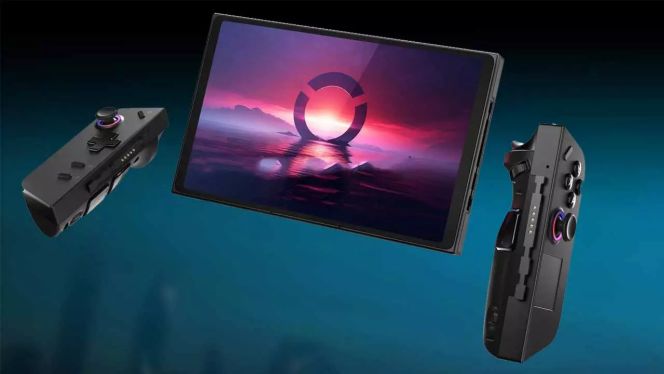
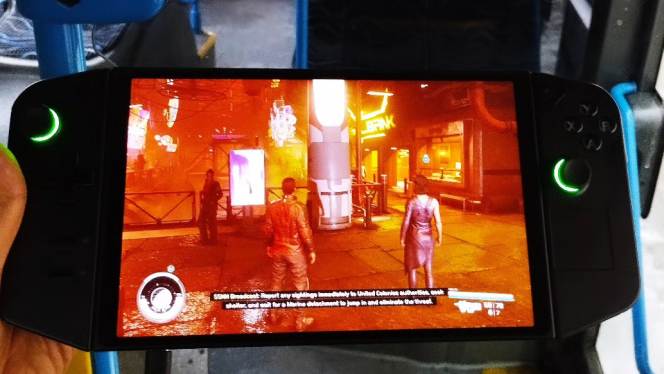
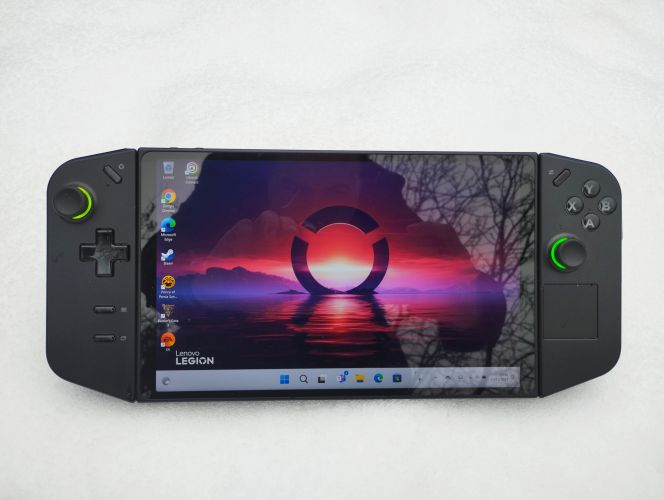
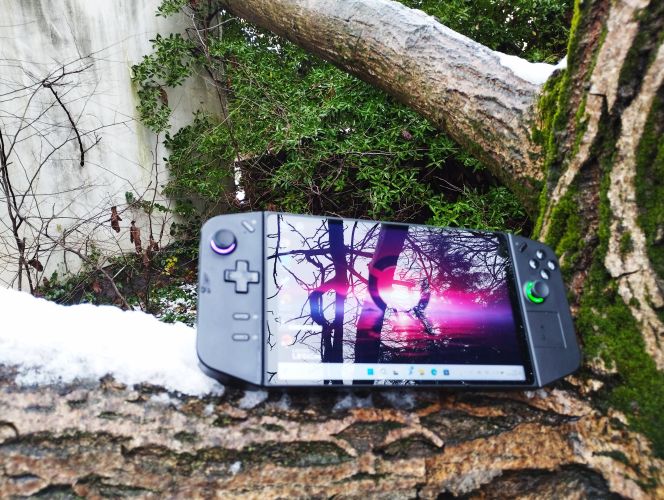
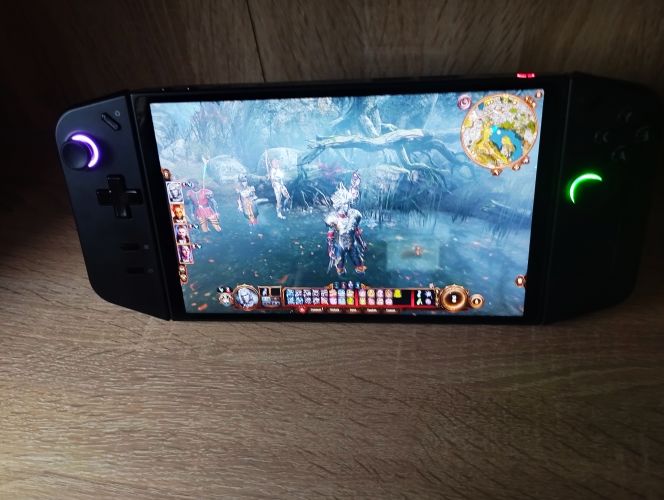


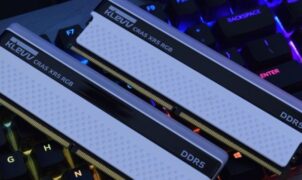


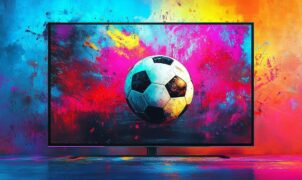

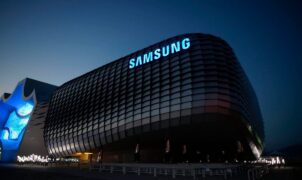

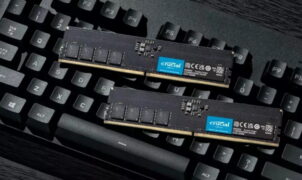




Leave a Reply